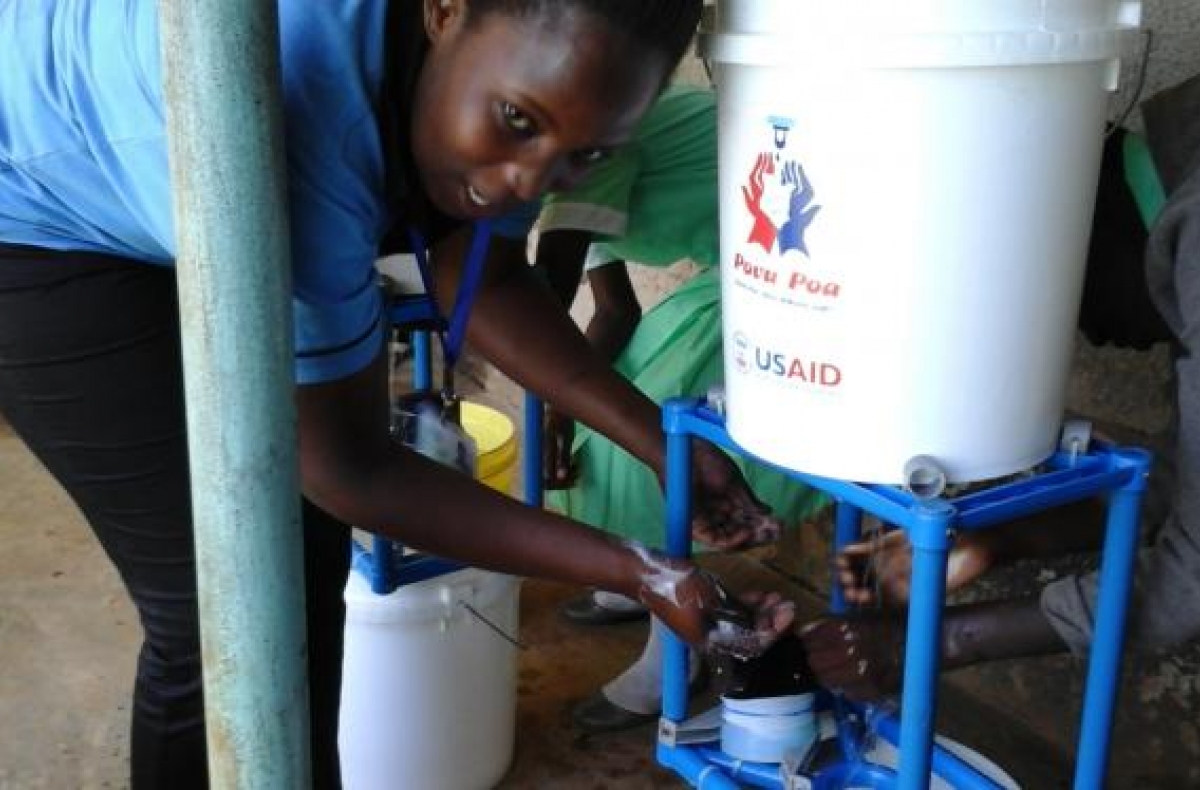Putting good health in reach
Innovative and affordable handwashing system holds promise for reducing spread of disease in areas without reliable piped water.
June 30, 2016

In some parts of the world, water pipes can be the difference between life and death. A study co-authored by WHD researcher Amy Pickering involved the creation of an innovative system that makes handwashing convenient and economical in areas without reliable piped water.
The research, done in rural Kenya, could help reduce the spread of respiratory and diarrheal disease, the leading causes of death for children under 5.
The new system, branded as Povu Poa (“Cool Foam” in Kiswahili), integrates a cost-effective foaming soap dispenser with a hygienic, water-frugal water tap in a secure and affordable design. The cost of the soap and water needed is less than half the cost of conventional handwashing stations in Kenya.
“We wanted to design a handwashing product that required far less soap and water than conventional systems,” said Pickering. “The best part about the Povu Poa is that it reduces both the monetary as well as time costs associated with good hand hygiene.”
Studies estimate that handwashing with soap can reduce acute respiratory infections by 21 percent and the risk of diarrhea by 40 percent. In settings without piped water, refilling water containers and securing soap for handwashing requires constant user effort and expense, creating barriers to handwashing with soap. In Kenya, for example, 78 percent of the population lacks access to household piped water.
People are more likely to wash their hands at critical times if they have a dedicated place with soap and water. Conventional handwashing stations in Kenya, such as a jug and basin or a bucket with a tap, are prone to soap theft, are cumbersome and unhygienic and are not water efficient. Alternative systems have proven flawed for a range of reasons, including instability, a need for frequent maintenance and theft.
Pickering and her colleagues conducted in-depth interviews and focus group discussions with potential users in low-income, peri-urban areas of Kisumu, Kenya. Then, they created handwashing system prototypes in response to user needs, and iteratively developed the designs. The end result: a desirable, adaptable, robust and affordable system that integrates a water-frugal tap with a dispenser that mixes soapy water with air to create foam.
With an estimated mass production cost of $12 for the Povu Poa, the system would pay for itself in approximately 2.5 years for a family of five.
In focus group discussions, approximately 80 percent of participants stated they would purchase a Povu Poa product. The researchers have produced 200 Povu Poa systems in Kenya and are currently field testing them in peri-urban households, schools, and health clinics to assess long-term usage and durability. To assess demand for the product, Povu Poa units are currently being sold to households at randomized price points, ranging from US$1 to US$12, to determine the price that most low-income users are willing and able to pay. Next steps include finalizing the design for mass production of the 2 Povu Poa models, partnering with a plastics manufacturer, and identifying effective sales and distribution strategies.
Contact Information
Rob Jordan
Associate Editor, Environment and Sustainability, Woods Institute
rjordan@stanford.edu


